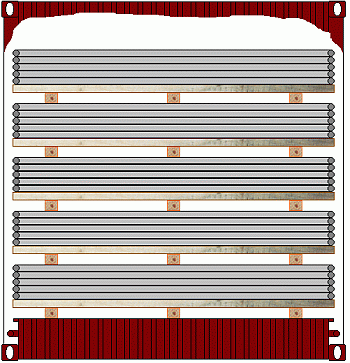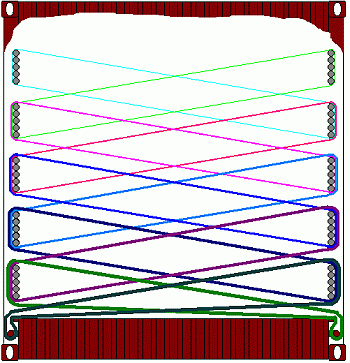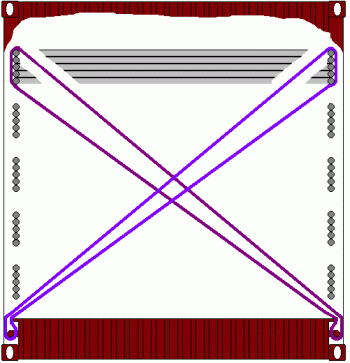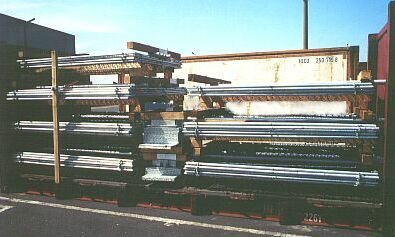Steel pipe structures on a 20' flatrack
Pipe or lattice structures can virtually always be secured from the opposite side using loop lashings. Since the angle becomes less favorable as the height of the cargo increases, the cargo can be secured directly to the cargo stowed below it and ultimately to the flatrack itself.
| |
 |
| |
Principle of stowage - end-on view |
| |
 |
| |
Principle of securing in end-on view |
To make the illustration a little clearer, only the outer pipe frames have been shown. Lower down, the strength or number of securing means increases in relation to the increasing cargo mass. The principle could also be described as piggy-back securing, as each part of the cargo takes the next on its back.
| |
 |
| |
Principle of securing one layer in plan view |
| |
 |
| |
Principle of securing at front |
Whether the entire cargo block or only individual parts are lashed to the end walls (or the next stack) depends on the maximum securing load of the lashing points, the securing materials available and the mass of the cargo. It goes without saying that blocking may also be used in the lengthwise direction. Lateral blocking is also an option in the case of flatracks with stanchions. Depending on the mass of the cargo, additional cross lashing may be incorporated.
| |
 |
| |
Additional cross lashing for stabilization |
To clarify the securing principle, only the outer edges of the "pipe bundles" and part of the top stack have been shown.
|





